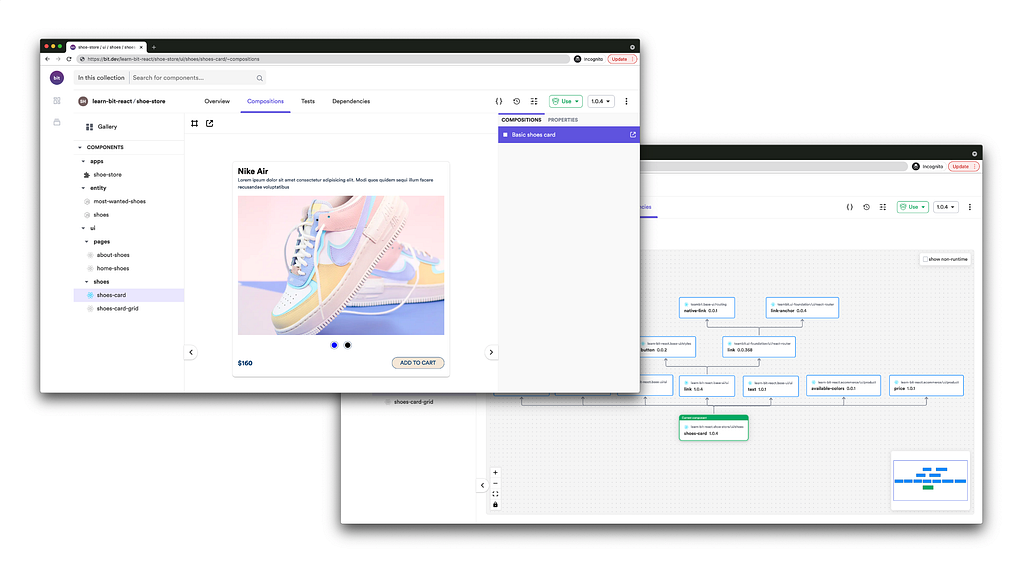This content originally appeared on Bits and Pieces - Medium and was authored by Galaxy Weblinks

People frequently use apps to help them achieve their goals, whether it’s to save money, strengthen friendships, meditate regularly, or train for marathons. Developers and designers can use app design psychology to help users form habits and shape their behavior.
Psychology can influence every aspect of the app experience, from the screenshots used in the app’s listing in the App Stores to the navigational controls within the app itself. While numerous psychology principles can help increase downloads and usage, here are five of the ones we find most useful.
#1 Commitment and Consistency: We Make Decisions Based on Our Self-Image
The thought: “This is so me, I need it!”
We frequently commit to making decisions that are consistent with our self-image. Furthermore, once we make this small commitment, we are more likely to follow through and make larger commitments to maintain that self-image.
Here’s an example of how our self-image causes us to make decisions that reflect that image:
-”I’m a bit overweight.” (Perception of oneself)
-”I’ll take that free spin class at the gym.” (Minor commitment)
-“Now that I’ve attended the free session, I should sign up for an annual membership.” ( A substantial commitment)
That begs the question: do you know how your users perceive themselves? If not, you’ll have to put in the time and effort to find out. This self-image is critical for understanding how your audience thinks and will help them make their first conversion.
Engagement Tips:
- Understand the personas: User personas assist you in crafting relevant and consistent messaging (there’s that word again). You can now craft email subject lines, push notifications, and in-app messages that are relevant to their experience, reinforce their self-image and influence their purchasing behavior.
- Create a multi-channel nurturing campaign: Over several steps, guide users from their initial commitment to a true conversion. The next steps could be to complete your profile, fill out your preferences, and so on.
- Request a single small action: Whether it’s as simple as “Follow us on Twitter” or “Create a profile,” ask users to complete one simple action right away.
#2 Social Proof: We Want to Be a Part of a Tribe
“I’ll do it because everyone else seems to be doing it,” the thought goes.
Social proof is one of those marketing principles that are so widely used that we won’t get into the details. Suffice to say, seeing proof that others are doing something makes us want to do it as well.
Engagement Tips:
- Show the number of customers: Showing off your number of customers/users/fans is a standard feature on every website. Display their logos! McDonald’s is famous for claiming to have served “billions and billions” of hamburgers. How many people have your app served?
- What do experts think? Display any awards or honors your app has received. Display statistics and research from reliable sources, such as analyst firms, scientific organizations, or professional associations.
- Showcase user testimonials: In your marketing materials, highlight those glowing 5-star reviews. Display testimonials not only on your app store listing but also on your website and social media channels.
- Display social engagement: If you have a sizable social media following, display those follower numbers! This could persuade new users to join the tribe.
#3 Scarcity: We Respond to Immediate Deadlines and Depleting Supplies
The thought: “I’ll do it because it’s my last chance.”
How many times have you clicked on an online deal because it said: “last 2 days to avail the offer”?
I’m sure we’ve all succumbed to the perceived scarcity that creates a sense of urgency in us. The scarcity of something we want creates an increase in demand.
Engagement Tips:
- Display units remaining: For events or physical goods, you can show the number of units or reserved seats that are still available. This is one of the reasons why, when trying to book an airline ticket, travel apps always show “Only X seats left.”
- Discounts: Create price deals that are only available for a limited time, such as making a purchase on your app or signing up for a promotion.
- Use countdown timers: We’ve all seen the Amazon countdown timers ticking away the seconds until the deal expires. Display it and put that sense of urgency right in front of your users’ faces.
#4 Influencer: We are influenced by those we like
“I’ll do it because I like you,” the idea goes.
It’s natural to be influenced by people or brands we like.
Engagement Tips:
- Make your app enjoyable: There are numerous ways to have fun no matter what industry you work in. One idea: use game mechanics to increase engagement! Indicate progress (“Your profile completion: 85%”) or create usage levels (“You’re now a productivity ninja!”). Hide Easter eggs or special prizes within your app to surprise and delight your most ardent fans.
- Look for low points in the customer journey: Find out where your users tend to leave. What are the steps they take before uninstalling? When you’ve determined what these actions are, replace the low points with positive experiences. (Imagine a hotel app showing users a coupon for a free breakfast instead of the bill for their reserved booking).
- Remove the jargon: Whether you’re sending an email or a push notification, keep the tone conversational. Reduce the use of business jargon that may alienate your customers. Write as if you’re having coffee with a friend.
- Demonstrate to the world that you are helpful: Be friendly and helpful in all of your communications, whether on Twitter or in the app store comments section.
- Give a design overhaul: Examine every design element in your app, including UI and UX, as well as your app logo, email headers, social media profile images, and app store screenshots. Would *you* be enticed to download your app? The goal is for every visual asset to elicit feelings of delight, excitement, friendliness, warmth, and humanity in the user.
#5 Authority: We Do What We’re Told
“I’ll do it because an expert said so,” the thought goes.
It’s human nature to want to follow, especially if a leader or authority figure has a message or agenda that we believe in.
Engagement Tips:
- Show only the simplest function first: Introduce your users gradually. Don’t give them every feature right away!
- Use notifications to teach them the rest: Show some notifications the second time a new user launches your app. Show them more about how to use the various app functionalities when they click it to clear the alerts.
- Make things simple: If you’re going to show users how to share a file on your messaging app, for example, it’ll be easier if you’ve already created a fictitious user for them.
Wrapping Up
It’s pointless to sugarcoat it. There are millions of applications to choose from in the App Store and Google Play. Even if you have a unique value proposition and a well-defined target audience, it is extremely difficult to stand out.
This is why, before and after making your app available to the public, it is critical to conduct proper user research, paying close attention to the mental steps and processes.
Contact our UI/UX design experts if you want to create custom software with a pleasant and unique user interface.
Develop & share independent components with Bit
Bit is an ultra-extensible tool that lets you create truly modular applications with independently authored, source-controlled, and maintained components.
Use it to build modular apps & design systems, author and deliver micro frontends, or simply share components between applications.

Bit: The platform for the modular web
Related Stories
- 4 Bit Use-Cases: Build Micro Frontends and Design Systems
- 9 Reasons You Should Use Bit for Designer Developer Collaboration
5 Ways to Drive Mobile App Growth using User Psychology was originally published in Bits and Pieces on Medium, where people are continuing the conversation by highlighting and responding to this story.
This content originally appeared on Bits and Pieces - Medium and was authored by Galaxy Weblinks
Galaxy Weblinks | Sciencx (2021-06-23T15:54:49+00:00) 5 Ways to Drive Mobile App Growth using User Psychology. Retrieved from https://www.scien.cx/2021/06/23/5-ways-to-drive-mobile-app-growth-using-user-psychology/
Please log in to upload a file.
There are no updates yet.
Click the Upload button above to add an update.
